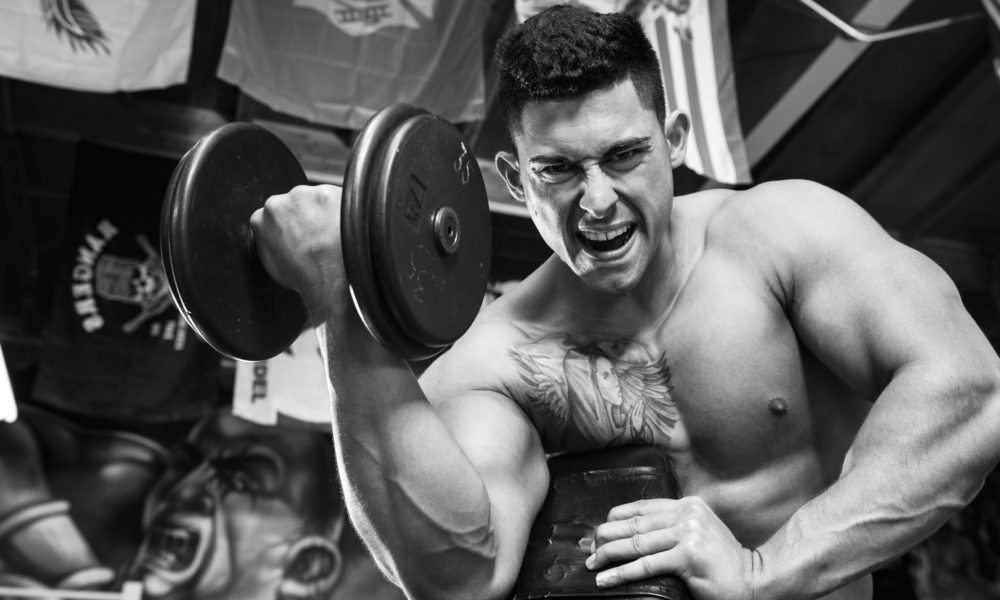

The best isolation exercises for hypertrophy.
By Alexander Juan Antonio Cortes
Isolation exercises have been utilized for over a century, but their usefulness is still debated to this day. Some lifters favor them, while others shun them, but the truth is not binary. Isolations movements can be more effective than compound exercises when used appropriately, and knowing how and when to apply them is the key to incorporating them into your training
An Isolated History
Isolation exercises have existed for thousands of years. There are historical records dating back to Ancient Greece, Persia, and India, depicting soldiers training with weighted implements and performing movements that resemble curls, shoulder raises, and various swinging movements. Clearly mankind recognized early on that resistance training and muscle growth had a very clear relationship.
Flashing forward a few thousand years. The “Physical Culture” movement arose in the late 1800s and was led by Arthur Saxon and Eugen Sandow. Both of these men published various guidebooks on how to lift weights, and you can bet that isolation exercises were part of their repertoire. The weights they used were very primitive, as the adjustable barbell had yet to be invented. The most common “weights” for recreational use were the globe-style dumbbells and fixed-weight barbells, along with various odd implements like sledgehammers, weights for measuring cereal grain and produce, and ballast weights.
Isolation exercises were in use, but compound lifts were recognized for being the most effective at adding muscle across the entire body. Up until the 1940s, bodybuilders were usually also competitive weightlifters and strongmen at the same time. Bodybuilding competitions almost always had an athletic competition as well, so the bodybuilders of the classic age had to perform gymnastics, Olympic lifts, or some combination feat of strength.
As the sport of bodybuilding grew, the athletic component was eliminated and the competitions became focused strictly on the physique. It was during the 1950s that isolation movements started to become popular, and it was largely due to one man. Steve Reeves was the biggest star in bodybuilding in the late 1940s and early 1950s. He pioneered the “V-taper” look and was leaner than competitors who had come before. He also was infamously known for using a combination of compound and isolation movements in his training, and for training with mostly moderate to high reps, rarely doing fewer than eight reps a set.
While today we would call this rather conventional bodybuilding training, at the time Reeves was a total outlier and was even criticized for “sissy” training. Bodybuilders to that point were mostly reliant on the Olympic lifts, overhead presses, and bodyweight movements like dips and pull-ups. The idea of doing kickbacks and extensions, multiple sets of curls, lateral raises, and leg extensions simply wasn’t popular.
Reeves results were undeniable however, and after he left the sport, many other bodybuilders took to isolation movements. Dave Draper, Larry Scott, Sergio Oliva, and of course Arnold Schwarzenegger all employed isolation movements, and today, anyone who takes physique building seriously has used them.
Hypertrophy: Global Effect Versus Regional Effect
Compound movements build what is called global hypertrophy. You can conceptualize this as “overall muscle.” A compound movement loads multiple muscles with the greatest amounts of resistance, in the strongest biomechanical positions, and creates the most muscle damage across multiple muscles. So the more muscles involved, and the greater the capacity for loading, the greater the potential for hypertrophy. As we all know, a squat will build more overall muscle than a leg extension because so many more muscles are involved. But does that make isolation exercises inferior?
The short answer is, no. Isolation exercises target individual muscles, not multiple muscles. Hence, isolation exercises build “regional hypertrophy.” So the comparison between the two is a false premise. The context of usage is not whether compound movements build more overall muscles, but whether a compound movement can be effective for targeting individual muscles.
This is where isolation movements come into usage. A biceps curl can create more eccentric damage, more metabolite build-up, and greater sustained tension in the biceps muscle than doing chin-ups—so can a triceps pushdown compared to a weighted dip, or a forearm curl compared to a heavy row.
While isolations exercises will not build the entirety of muscle, they can target different regions of a muscle. And in some cases, performing multiple isolation exercises together can be almost as effective as performing a compound movement.
The following movements that I, tongue-in-cheek, call The Magnificent Seven, are highly effective isolation movements that work for all body types and can be utilized in any program.
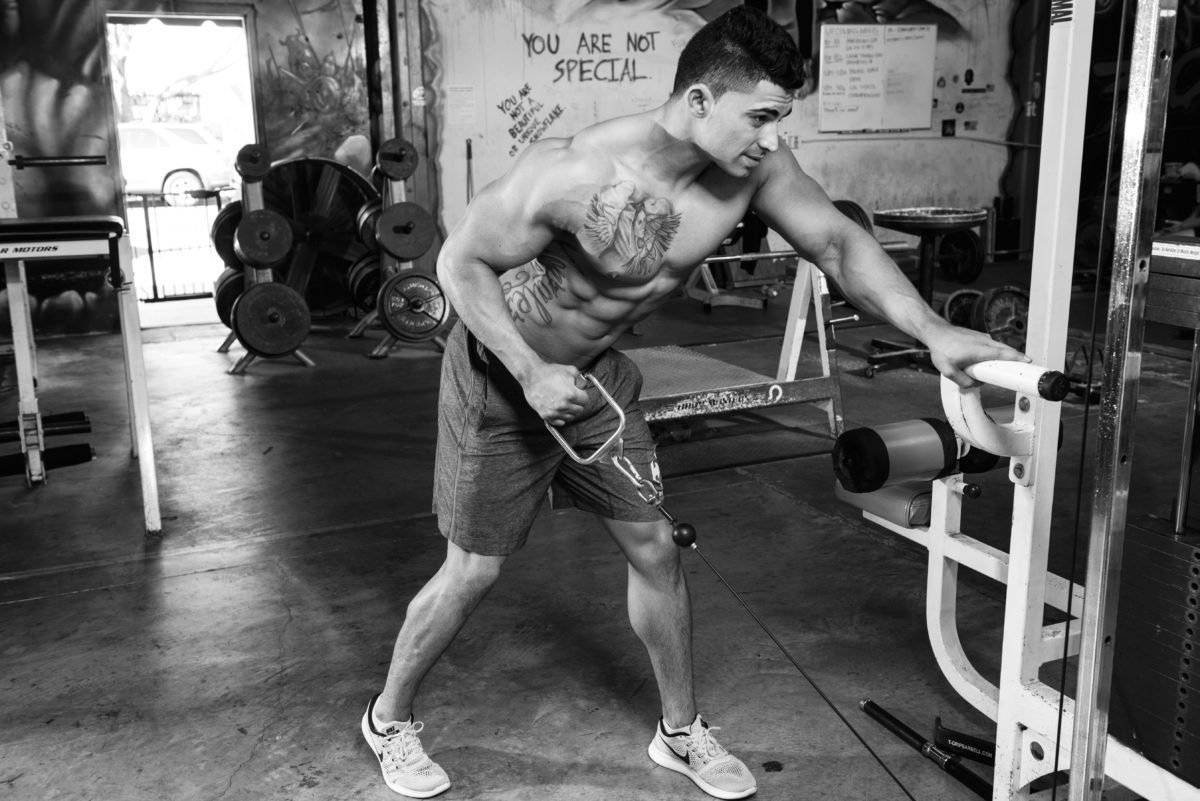
1. Unilateral Low Cable Row
The unilateral low cable row is a fancy way of saying a one-armed row done with a cable. In this movement, you would use a cable tower or cable stack, and set it to the lowest possible position. Using a conventional D-handle, grab it with the working arm, and back up so that you start the movement with tension already on the lat. Take a staggered stance, with the leg on the working side set slightly back of the opposite leg. This change in position improves latissimus recruitment. From there, lean forward to a 45-degree tilt with the torso. This creates a leveraged position to maximize the lat stretch and tension. Control the forward extension of your arm until you’ve fully stretched the lat, and then fully contract, driving your elbow back.
This movement is best done with a slow eccentric contraction, followed by a faster concentric. Do not rush the reps and use momentum to move the weight. Done properly, you will fully pump the muscle belly of the lat and feel the exercise all the way down to the attachment point at the waist.
Perform two to five sets of eight to 15 reps
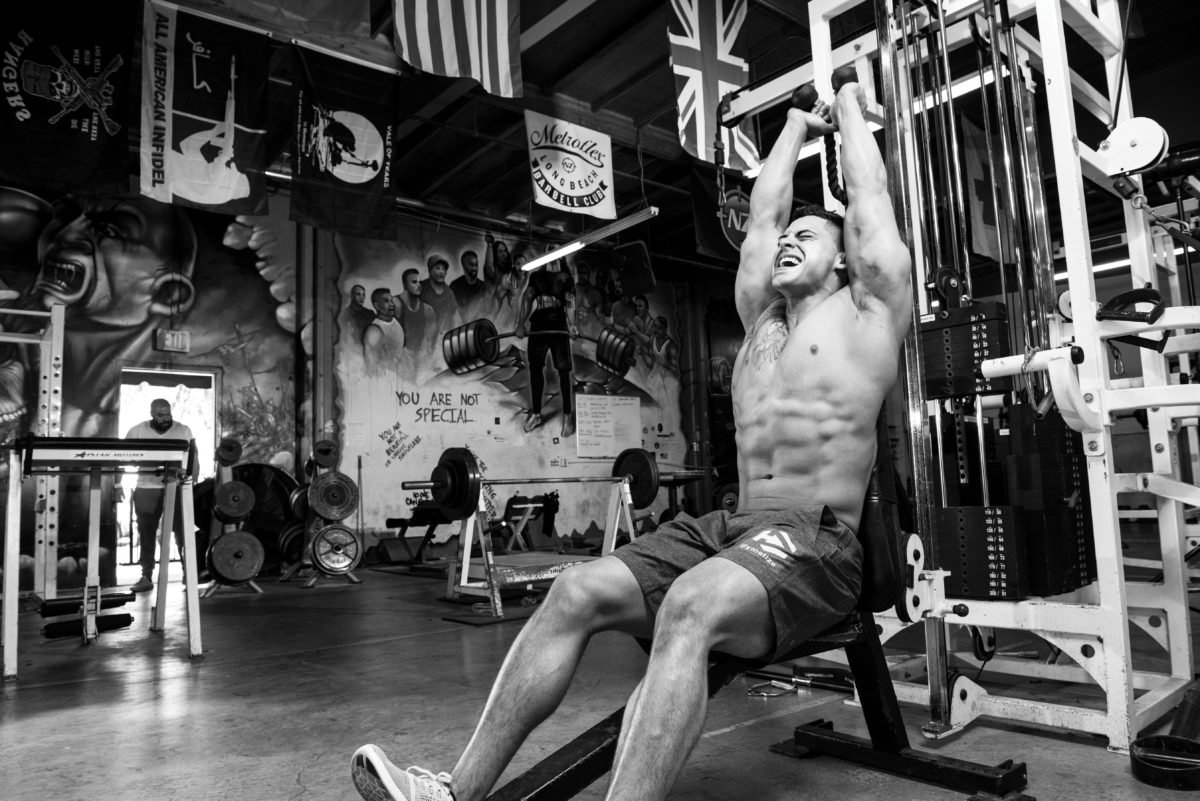
2. Seated Overhead Rope Triceps Extension
This exercise is excellent for both short-armed and long-armed people. The movement requires a bench or seat to sit on, a double-ended rope, and an adjustable cable stack. Set the cable stack to about a knee-high position and attach the rope to it. Place the bench lengthwise against the cable stack, leaving enough room that it doesn’t get in the way of the rope. Or if you have a seat, place it facing away from the cable stack.
From here, you have one slightly tricky part of the setup. Sitting down, you’ll have to twist your body to grab the rope and then sit upright to get your arms into an overhead extension position. You should not be leaning forward at all, but sitting up completely straight, with your chest puffed up and your body stable, feet planted. If you have a training partner, they can simply hold the rope up for you without any contorting on your part.
Once you are in position, you will extend your arms almost to full lockout, and then all the way back down. You are emphasizing the long head your triceps in this movement, so all of the reps should be slow and controlled, with a two-count up, pause, and then two-count down. Do not try to make this explosive. Perform reps until you cannot extend your arms to the necessary range of motion.
Perform two to four sets of eight to 12 reps
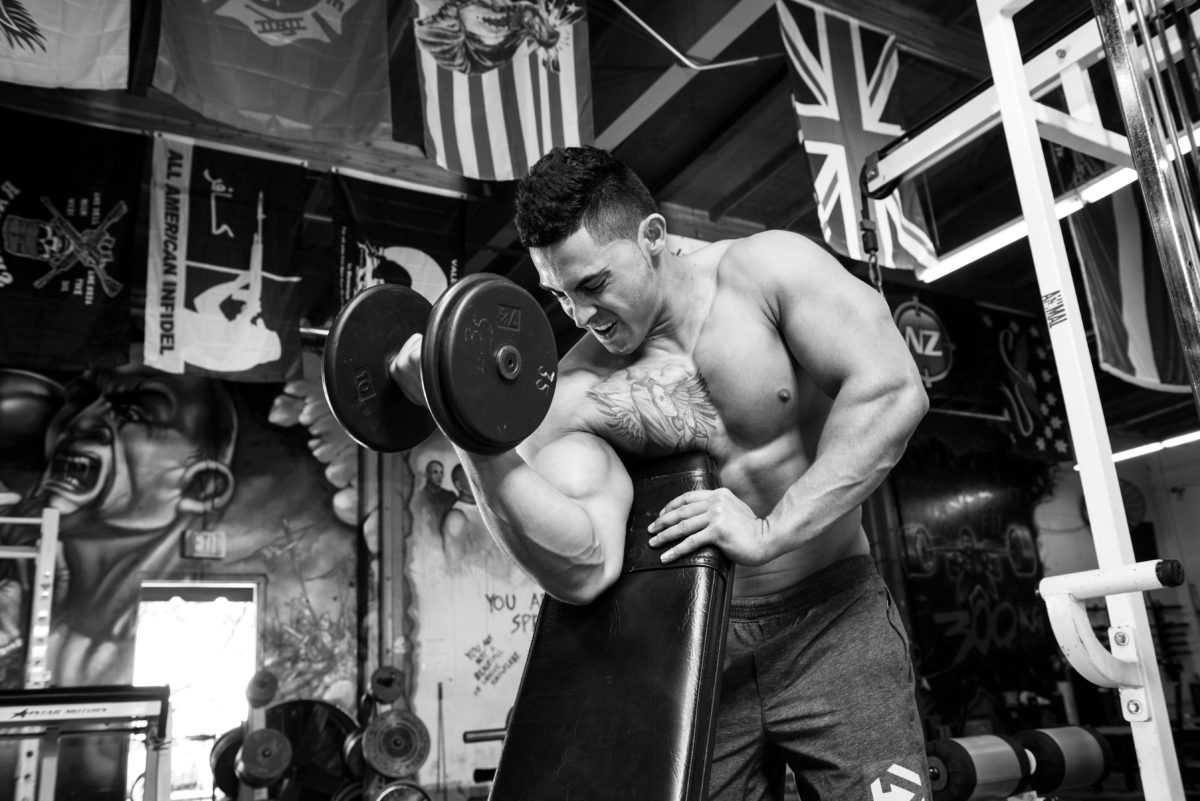
3. One-Arm Dumbbell Preacher Curl
This movement works best using an adjustable bench versus the standard preacher curl bench. The best angle is about 60 degrees. Angle your body slightly sideways from the bench and anchor your arm firmly against the bench back. With a firm grip on the dumbbell, perform pronated, neutral, or supinated curls. This movement is best done with an equal eccentric and concentric tempo. The load is a secondary concern.
Perform two to four sets of eight to 12 reps
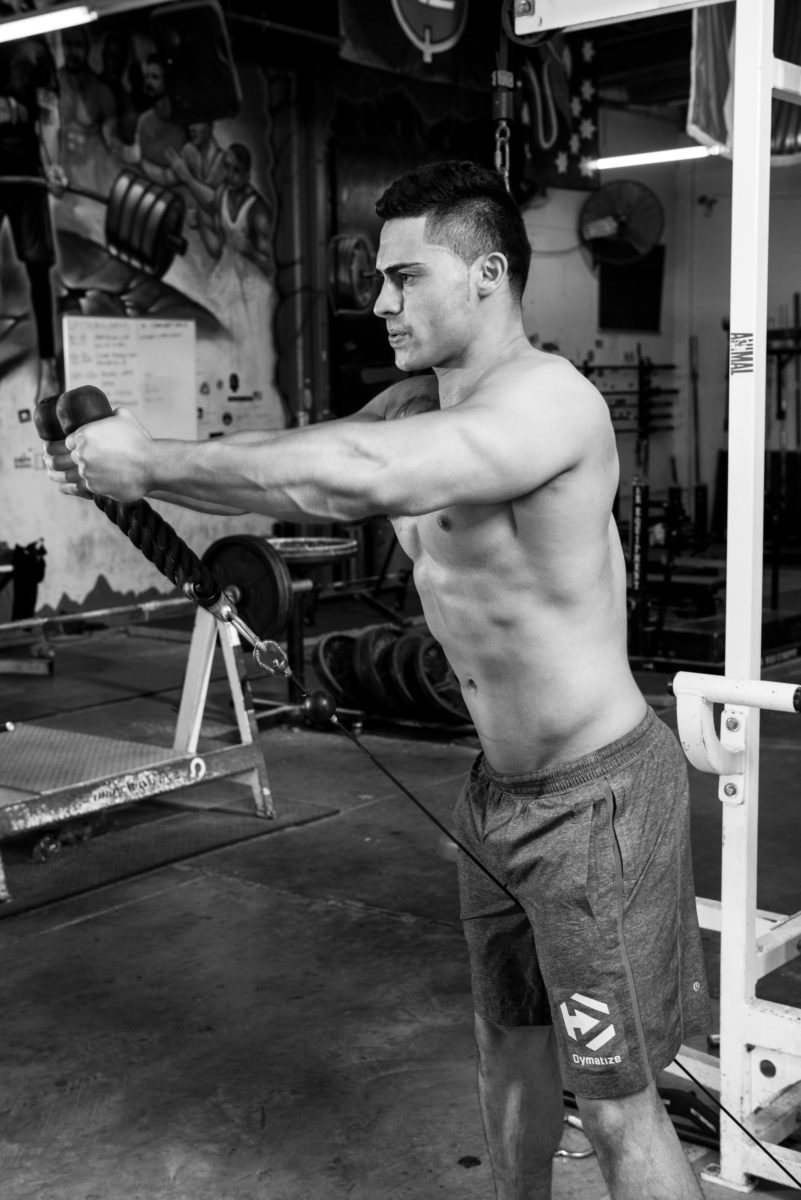
4. Front Delt Cable Rope Raise
This exercise requires a double-ended rope and an adjustable cable stack. Set the cable attachment down to the lowest possible position and then attach the rope to it. With your back to the cable, grab the rope with both hands with a neutral grip, and walk forward a few feet so that you have tension. Angle your torso to 45 degrees, and sit your hips back so the cable can easily pass through your legs and won’t hit you in the groin. From here, extend your arms out, but do not lockout your elbows. Raise the rope to shoulder level, and then back down.
Perform two to three sets of 10 to 16 reps
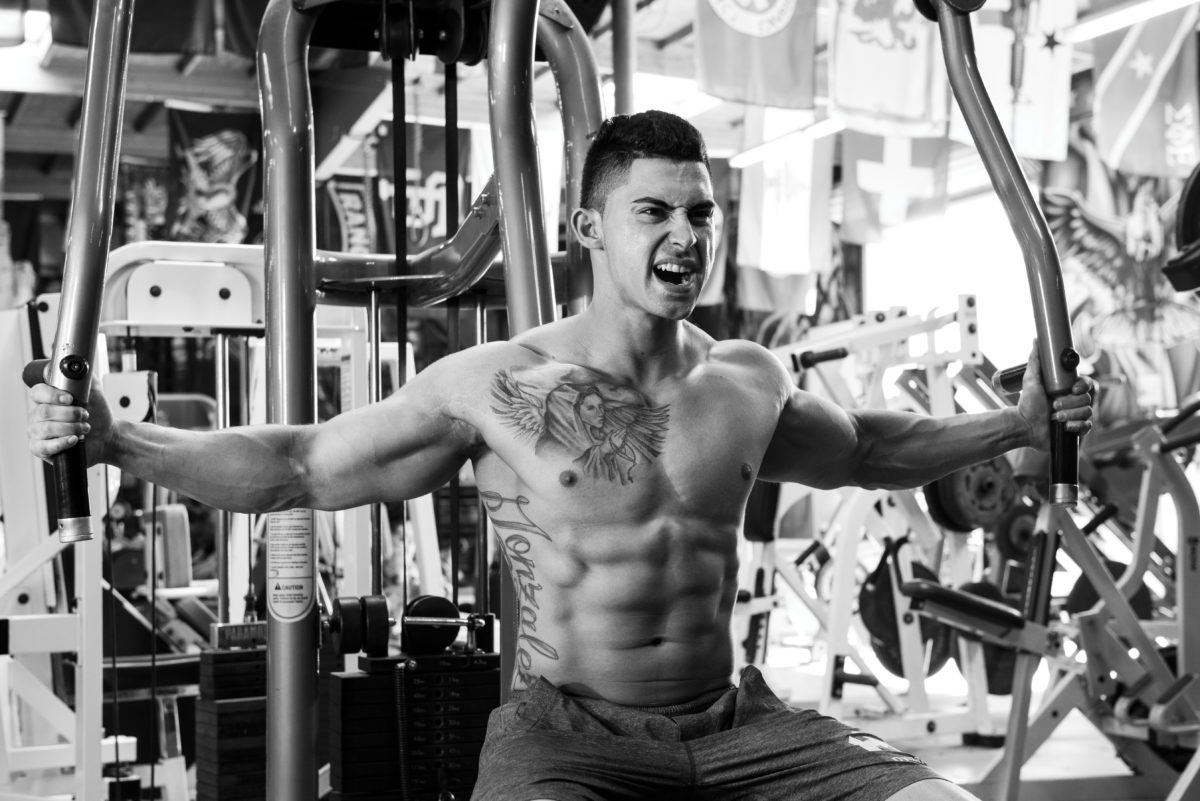
5. Machine Upper-Pec Chest Flye
Some people find that flyes don’t work for them, but they can be modified to suit any body type. It’s all dependent on setup. Machine flyes can be awkward, as the arms of the machine might not be long enough, or the resistance curve can be too close or too far out in front of your body. A simple solution is to lean forward.
When you place your body in a forward lean, you can better position your scapula, shoulder joint, and extend or flex your elbows to a position that suits your own particular strength curve. From there, you can then perform the flyes, and even better, you have placed the emphasis on your mid and upper pectorals, which are notoriously hard to develop for many lifters.
Perform two to three sets of 10 to 20 reps
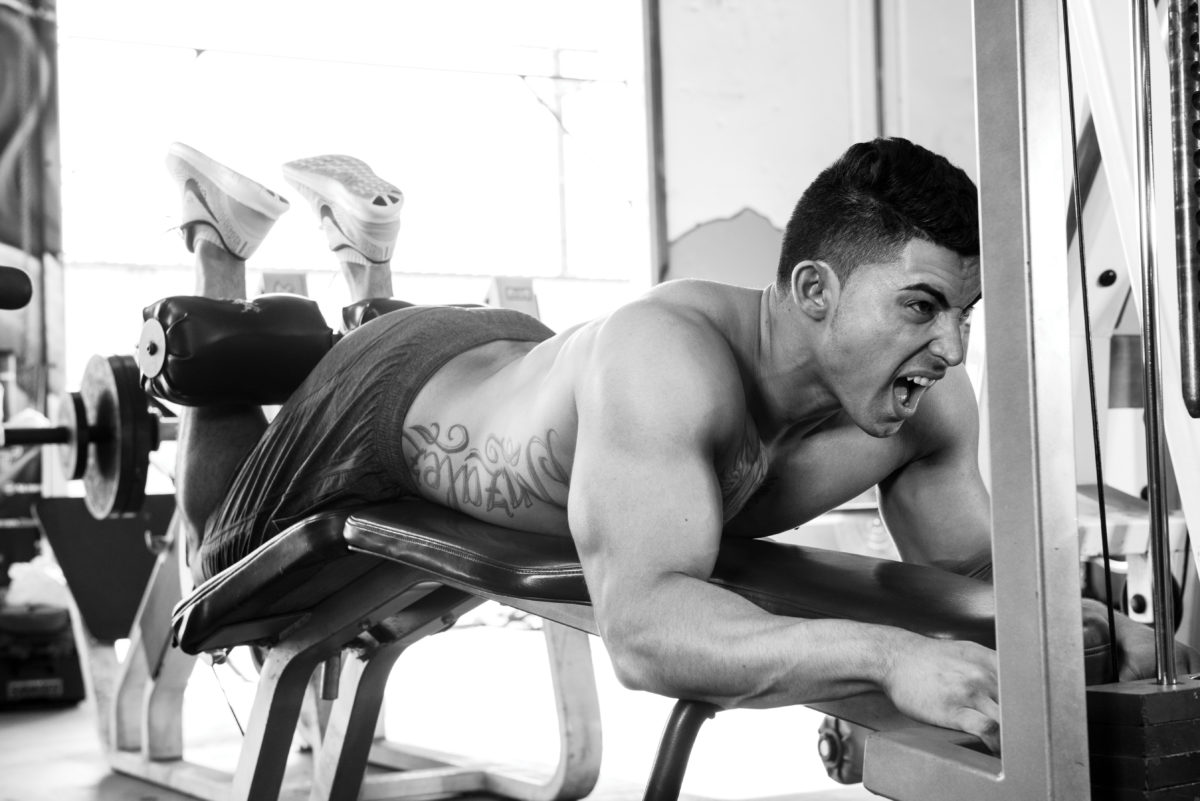
6. Lying Leg Curl
The lying leg curl has been around for many decades, and its effectiveness cannot be disputed. It completely isolates the knee flexion function of the hamstrings. By adjusting the machine appropriately, you can achieve a peak contraction and eccentric contraction that cannot readily be matched. To find the best setup, set the height of the roller pad into a position where it’s not hyperextending your knee. Then, set the roller pad to a position above the Achilles tendon, not on top of it. From here, you will need to actively flex against the pad to move the weight and lower it with control to maintain tension. Try to touch the roller pad to your gluteal fold on every rep.
Perform two to six sets of six to 12 reps
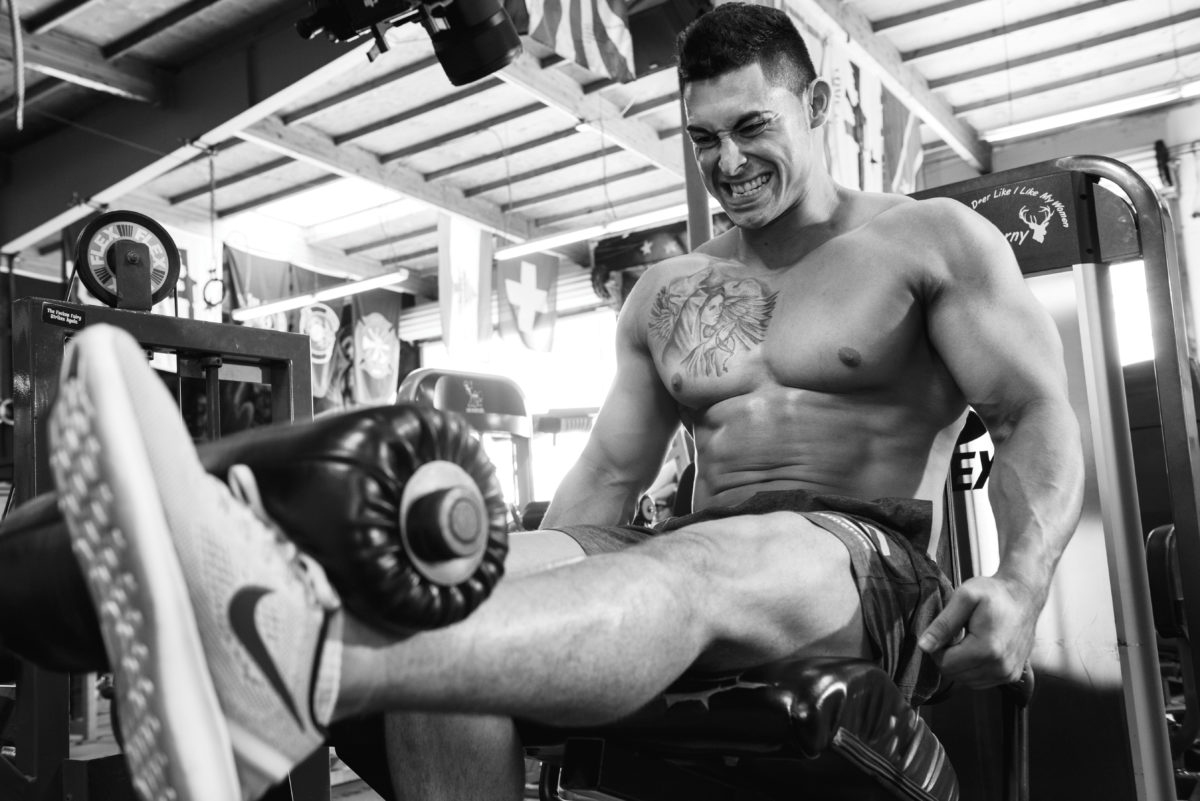
7. Single-Leg Quad Extension
Many people have come to shun the quad extension machine, but it’s an unfair judgment. Quadriceps extensions are never meant to be done heavily or explosively. Performed slow and controlled for moderate to high reps, they can actually strengthen the tendons of the patella, and depending on how you position your leg, they can work all four sections of the quadriceps muscle. With this single-leg extension, you are working one leg at a time. This drops the loading down immensely, but it also allows you to concentrate all your focus into the one leg. Further, by reducing the load, you don’t have to worry about stressing out your knees. This movement is excellent for equalizing discrepancies in strength and size between your quads. If there is a strength deficit of any kind, it will become obvious very quickly.
Perform two to four sets of 10 to 20 reps






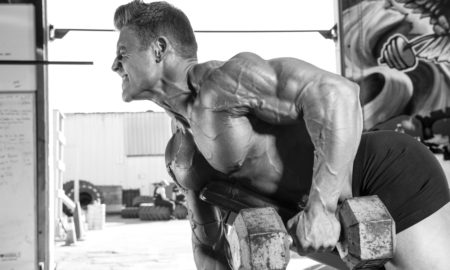
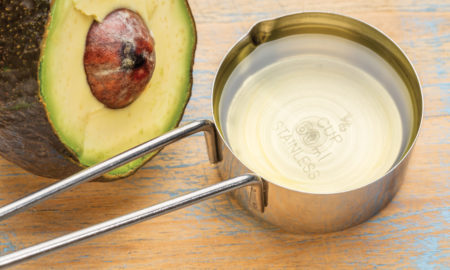












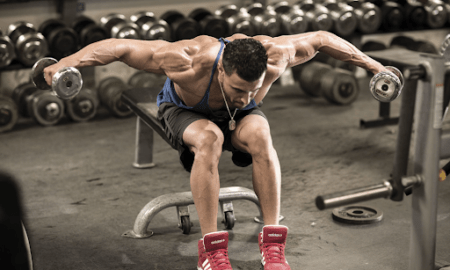
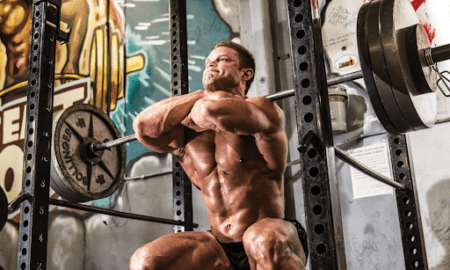
You must be logged in to post a comment Login